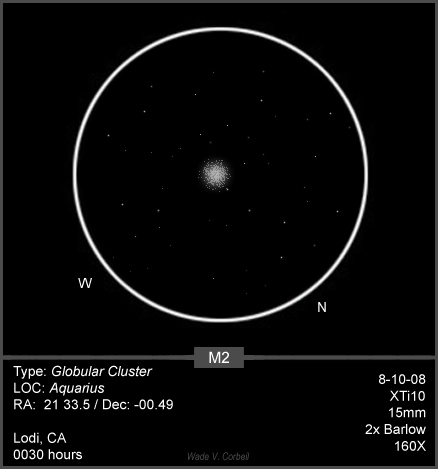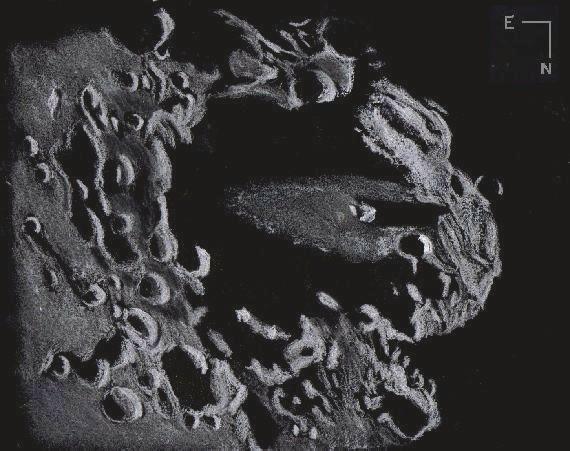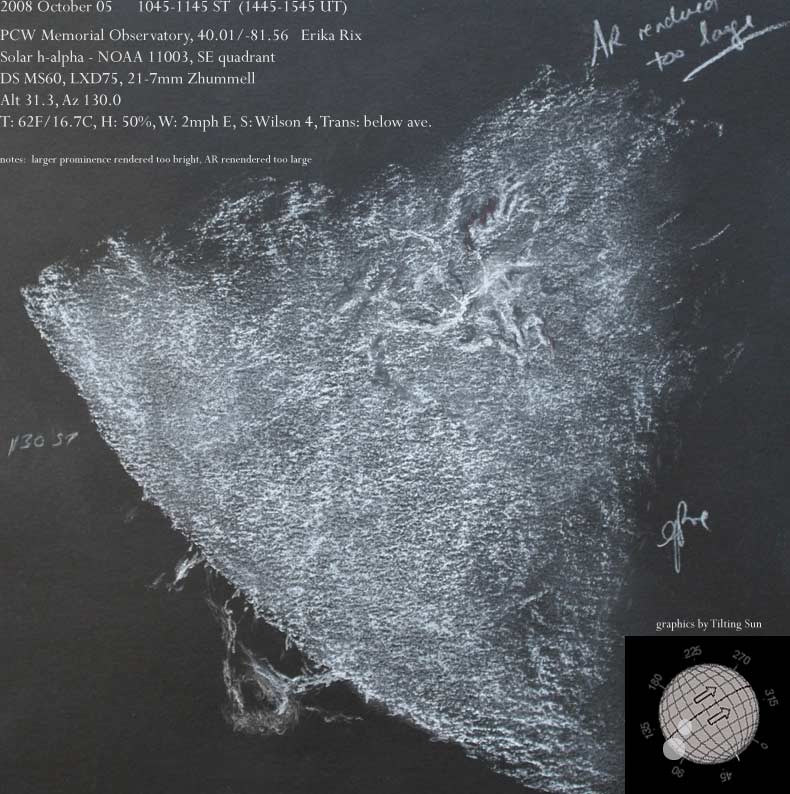M45 – The Pleiades
Sketch and Details by Rony De Laet
M45 is perhaps the most attractive open cluster for binoculars. It certainly is best viewed with a low power instrument. At a distance of 410 l-y this admirable open cluster still measures 2 full degrees across. Its true diameter is 14 l-y. M45 is with an age of 20 million years a relative young cluster, so young that the dinosaurs never saw Pleiades. Charles Messier included the cluster as the final entry of his first catalogue. Some say that Messier just added the Pleiades to arrive at 45 objects in total. M45 is a very rewarding object in any aperture. The tiny dipper can also be seen with the naked eye. It’s a fun exercise to count the number of stars visible with the naked eye. And do compare the Pleiades with the other great cluster: the Hyades. Keep in mind that the Hyades are 150 l-y away, while the Pleiades are 3 times further away. With the two clusters in your line of sight, the night sky suddenly shows a greater sense of depth, doesn’t it?
An interesting fact is offered by the nebulosity associated with the Pleiades. According to recent research, the open cluster is just passing through a nebulous cloud in the Milky Way. Photographs show this nebulosity very well. The visual observer must make use of the clearest nights to see a glimpse of this faint haziness. The brightest part of this nebula is NGC 1435, also called the Merope or Temple’s Nebula. Look for a faint comet tail S of Merope. I saw NGC 1435 with a 4” refractor before, so I knew where to look. Much to my surprise, I could detect the Merope Nebula with the 15×70. There is also a small ‘stripe’ of light visible just N of Merope. This small portion of NGC 1435 runs from SE to NW. The trick is to make the best of your averted vision while trying to avoid the bright glare from Merope.
I usually have little sense of colour. But when I studied this beautiful cluster, I compared its members with the surrounding field stars. While I swept the white looking Pleiades out of the field of view, the new field stars looked pale yellow to me. When I switched back to M45, the cluster suddenly looked rather blue. I repeated this exercise several times to convince myself that M45 does look bluer than the surrounding stars.
Site : Le Castellard Melan, France ( 44° N )
Date : September 29, 2008
Time : around 0.00UT
Binoculars : TS Marine 15×70
FOV: 4.4°
Filter : none
Mount : Trico Machine Sky Window
Seeing : 2/5
Transp. : 4/5
Sky brightness : 21.33 magnitudes per square arc second near zenith (SQM reading).
Nelm: 6.5
Sketch Orientation: N up, W right.
Digital sketch made with Corel Paint Shop Pro X2, based on a raw pencil sketch.
(Note: if the sketch does look too dark on your monitor, try to darken the room.)

















